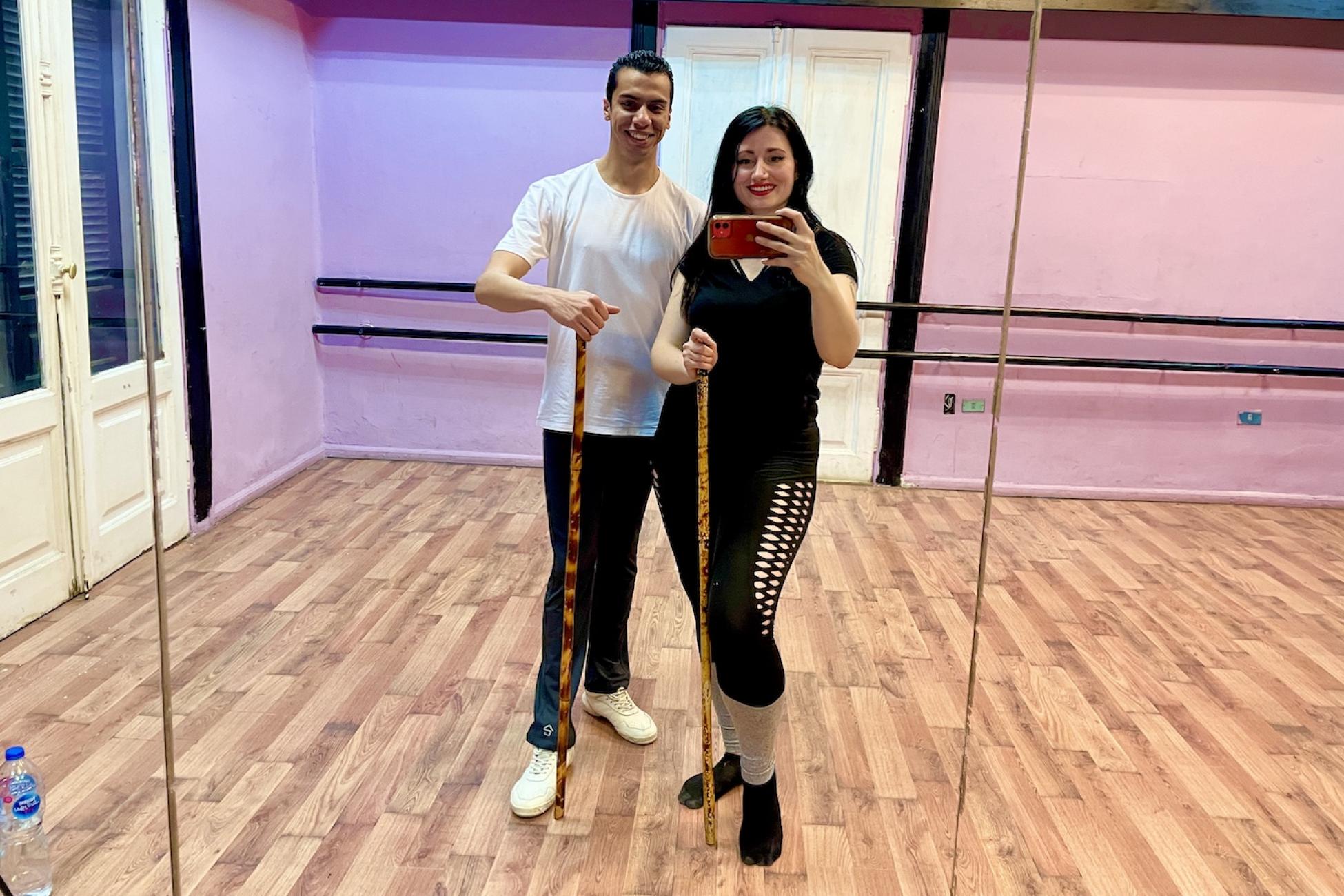So, the week started with me being bitten by a dog on the leg and having a series of rabies jabs. When the nurses at the hospital asked my name ("Lucy"), they replied "Oh, bellydancer!" and started shoulder shimmying. This happens a lot—not because of me, but because there is a famous, if not legendary dancer called Lucy, who is considered amongst the greats.
I also returned to dance classes. And it was great to be back in the studio. It’s been about five months since I’ve danced regularly and it’s a bit like driving—you never lose it—but it does take a while to feel comfortable again. I’m not as strong as I was and some movements, which last year were easy, now need retraining.
Most people think they know what belly dance is. In the Western world we expect someone who can isolate their movements and pop their body in an impressive way. But this alone isn’t belly dance. This is a Western belly dance.
What is Egyptian-style belly dance?
So, a full belly dance show starts with a mejance. It is a high-energy dance, where the dancer says hello to the audience, dances briefly to different styles and rhythms and enters with a veil. They demonstrate different styles: oriental (elegant), baladi (more grounded and earthy), shaabi (street style), saaidi (a traditionally male folkloric dance with a stick assaya) or possibly a different folklore dance from another region of Egypt. The texture of the same core movements changes depending on the style, so a hip drop in oriental will be smaller and more controlled than in baladi/shaabi.
Egyptian-style uses the same vocabulary of movements (from which the Western styles have developed) but they are performed differently. Take for example a shimmy: In Egypt, the shimmy is driven more from the thighs and hips, whereas in Russia and Eastern Europe, the shimmy is driven from the knees.
Egyptian-style is not particularly fast; it’s grounded, relaxed with the emphasis on intricate pelvis movements. Every Egyptian teacher has said to me: "You are not a machine; don’t dance like a machine." Feelings are at the centre of the dance, expressing the emotions of the song. And Egyptians love dancers who have dalaa, which has been described to me as "sexy, but shy." So, while a belly dancer looks glamorous and sexy, that’s not the only emotion being expressed. The emotions range from sadness, happiness to laughter and mockery depending upon the song. It’s also typically improvised.
When I started trying to learn "real" Egyptian dance, it was almost impossible to know where to start. It’s often mis-taught in the Western world, as there’s no formal rules or training in the way that there are in Latin or ballroom dances. So I’m incredibly grateful to have had some amazing and patient teachers here in Cairo.
Returning to the rhythm
My main teacher over the last three years has been Safy Akef, granddaughter to Golden Era dancer Naima Akef. Safy is mostly a teacher, rather than performing, but I can honestly say: of the current dancers in Cairo, no one dances like Safy. She dances true Egyptian style, every emotion of the song is fully expressed. She’s working abroad right now, so we take classes online, but during these classes I’ve learnt about dalaa (which, for a British person, is quite a challenge), the importance of softness, facial expressions and gestures and to embrace my femininity, as well as trusting my own inner sense.
I’ve also decided to start learning folklore, as this is a crucial part of a dancer’s show. As I’m a guest in someone else’s culture, I take it incredibly seriously that you need to learn correctly.
My teacher, Ahmed dances with the Reda Troupe. The Troupe was founded by the late Mahmoud Reda and his colleagues, who travelled across Egypt researching traditional dances from each region before developing these for the stage. The subsequent films and the stage shows gave Egypt a sense of pride in their culture. One of the most famous films Love in Karnak is on YouTube, and has the same feeling as an old Hollywood film.
I haven’t really studied folklore before, so the biggest thing for me to work on is foot patterning and I also have an awful memory and hate learning choreographies. We have started with Saaidi, which involves not just careful footwork, but accurate arm positions and stick work.
I will never be finished learning belly dance, because I always want to be much better than I am. The best piece of advice I ever had was, only listen to feedback from your teachers. You pay them for a reason. And I’m lucky to have some of the very best.
Add this article to your reading list




